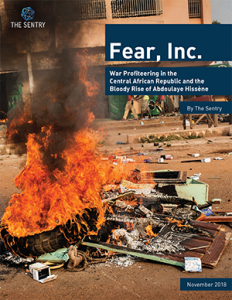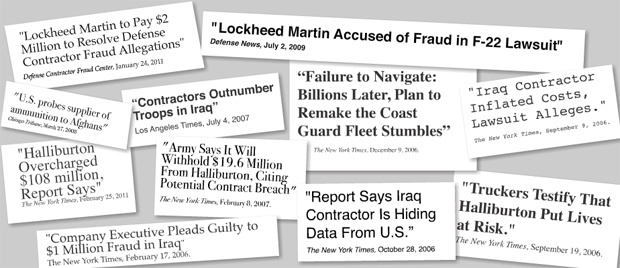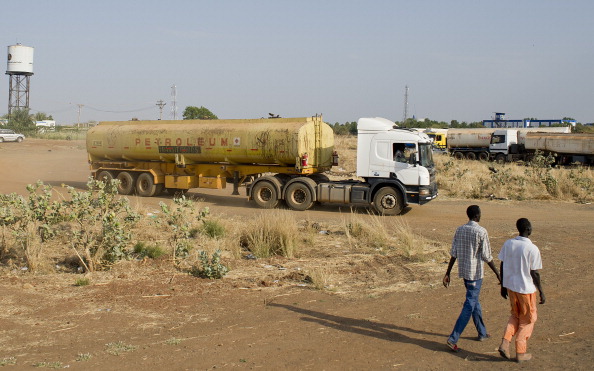The U.S. is in the midst of a full-blown public health crisis made worse by systemic political dysfunction. The benchmark Imperial College study suggesting that up to two million people in the U.S. could die from the coronavirus epidemic assumes that the U.S. has an adequate healthcare system— that no one dies from not getting treatment. It doesn’t. Without one, expected deaths are much higher. Should the U.S. experience be similar to Italy or Wuhan to date, add another eleven million* dead to the worst case scenario.
The point here isn’t to create fear or panic, but to illustrate the difference in outcomes that a robust government response can make. In trying to corner the market for virus test kits, Donald Trump assured that few, if any, would be available. In like fashion, House Democrats passed a paid-time-off bill so fraudulent that even Pravda-on-the-Hudson, the New York Times, called them on it. The official plan to date is financial, to bail out Wall Street and the airlines, a payroll tax cut and token checks to the masses, and hope that it all works out.
In lieu of providing an adequate level of healthcare to address the pandemic, which even hardened D.C. hacks know can’t be conjured out of thin air in a timely enough fashion, what is left is ‘social distancing.’ This is polite speak for quarantines variably undertaken. China was able to reduce the mortality rate after Wuhan by 4/5ths through a combination of draconian quarantines and a rapid buildout of healthcare provision. However, the infection rate reportedly began rising as soon as the quarantine measures were relaxed.
The strategy of ‘flattening the curve,’ of slowing the spread of the virus so that the healthcare system isn’t overwhelmed at any one time, could bring the mortality rate in the U.S. down by matching healthcare need to capacity. But implied in the structure of the economic stimulus is a couple of weeks at home watching Netflix and then it’s back to the races. This is a low probability outcome. Eighteen months, the anticipated duration of the pandemic if effective action to mitigate it is taken, means that a radically changed world will emerge from the other side.
the structure of the economic stimulus is a couple of weeks at home watching Netflix and then it’s back to the races. This is a low probability outcome. Eighteen months, the anticipated duration of the pandemic if effective action to mitigate it is taken, means that a radically changed world will emerge from the other side.
The idea being floated by Wall Street that pandemics are ‘black swans,’ unanticipated and unanticipatable events that legitimate extraordinary responses like government bailouts of private enterprises, suggests that history be made a required subject in business schools. Here is a partial list of epidemics and pandemics. They are so common that a functioning society would have thousands of permanent staff that do nothing but plan for them. And they are one of several thousand reasons why a functioning society would have a functioning healthcare system.
To understand why Wall Street should be left to rot this go around, look back to January 1980, when the current bull market can be estimated to have begun. The S&P 500 has to fall by another 2/3rds, from 2,400 to 910, to get to the normal valuation level (CAPE P/E = 8.5) at which this epoch of finance capitalism began. Understand, the S&P 500 at 910 wouldn’t represent a crisis, just a more reasonable valuation level. The financial crisis, to the extent there is one, is due to systemic leverage, the same problem that Wall Street faced in 2008.
The pandemic is but the catalyst for current financial troubles, not the cause. As was warned in 2009, 2010, 2011, 2012, 2013, 2014, etc., the Obama Administration’s bailouts were to make rich people rich again, not to ‘save the economy.’ So, here we are ten years later and the previously bailed out are once again telling us that the Federal government has to bail out corporations and the rich to ‘save the economy.’ ‘The economy’ is indeed in trouble, but it is in trouble because of the fragility created to benefit corporations and the rich, not because stock prices have fallen.
If ever there was a time for bold government action, this is it. The problem is that four decades of neoliberalism have instantiated the ethos that the role of government is to make rich people richer. Naomi Klein call this ‘disaster capitalism.’ I defer to Marx and Lenin. The idea that bailouts for corporations benefit workers begs the question: if the goal is to help workers, why not give the money to workers? It is the CEOs and corporate boards that loaded up their companies with debt to raise the value of their stock options that made these corporations so economically fragile.
More broadly, through the self-serving mythology of rugged individualism, capitalism has been used to shape and reshape social relations. This makes its dependence on serial bailouts both ridiculous and pathetic. Conceived several centuries ago to shift power from Aristocrats to a burgeoning business class, without a large and intrusive government to prevent consolidation and self-dealing, it quickly creates a new Aristocracy to close the door behind it. What is left is the privileged, remote and self-dealing oligarchy that now stands before us.
During ‘normal’ times, when this oligarchy isn’t acting to destroy other nations and the world, malgovernance for its own benefit is made the ordinary working of government. For instance, the U.S. military is wildly overfunded while the healthcare system is structured to let the people die at a politically acceptable pace. During ‘not normal’ times, a hierarchy of privilege is set in motion. First, save the wealth of the rich through bailouts. Second, secure the rights of corporations to profit from catastrophe. Last, let the people die at a politically acceptable pace.
A pandemic forces the afterthought— the pace at which the people are allowed to die, to the fore. The U.S. is currently working through bailouts to secure the wealth of the oligarchs and corporate monopoly plays to profit from catastrophe. Threatening to overturn the applecart is people dying at a politically unacceptable pace. The edifice of unenlightened self-interest risks being exposed. A few days without a paycheck and the rent doesn’t get paid. Without the rent, the landlord can’t pay the mortgage. Without the mortgage being paid, the bank goes under.
Suddenly the ‘richest country in the history of the world’ looks like some crappy third-world backwater. The social brutality of working paycheck to paycheck is transformed from individual to systemic failure. Bailouts for the rich expose how they got rich in the first place. And corporate chieftains scrambling to extort profits from sick and dying people exposes the class dynamic by which the rich get rich— by making poor people poor. The risk for the rich is that the logic of the guillotine begins to make sense. The risk for the rest of us can be counted in the sick and dying.
The coronavirus pandemic was both predictable, in that pandemics have been regular occurrences throughout human history, and it is external to how social organization is conceived under capitalism. Neoliberalism is a theory of governance without governing, of letting nature, in the form of markets, decide. Letting nature decide in a pandemic means the passive acceptance of mass deaths, which ties to the neoliberal refusal to create a functioning healthcare system. Political economy premised on individual desires is antithetical to the social nature of a pandemic. As with environmental degradation, it produces the logic of collective suicide.
The official American response to the pandemic has been exceptional only in the sense that markets have failed so spectacularly. The insipid, bi-partisan house ideology hasn’t worked because capitalism doesn’t solve social problems. It isn’t intended to. Donald Trump’s clumsy effort to corner the market in virus test kits for ‘American’ corporations has meant that we simply don’t have them. Obamacare certainly hasn’t produced any. The strategy that is unfolding of ad hoc quarantines and wishful thinking will either be converted into a robust response or the existing political order will end.
The hope that Democrats will fix what the Republicans broke is running up against three decades of Democrats breaking things. Joe Biden, who wholeheartedly supported George W. Bush’s $4 trillion war against Iraq, just last week claimed that the U.S. can’t afford a functioning healthcare system. Mr. Biden’s actual history in elected office has been to the right of Ronald Reagan. He spent decades trying to cut Social Security and Medicare. He supported bankruptcy legislation that shifted the onus for unpayable loans from banks to poor people. He is the worst person the Democrats could put forward in a pandemic if they care about governing.
The question of bailouts is fundamentally different from that of taking care of people. An adequate response to the pandemic will require years of dedicated effort, not tossing a trillion dollars at ‘the economy’ and hoping for the best. Social distancing and quarantines might require income and material support for tens of millions of people for as long as eighteen months. Nancy Pelosi is reportedly already balking at spending government money to do what is necessary. It would be a benefit to workers if she forced her corporate sponsors to provide paid time off for their employees, but she won’t do this.
The economic fragility behind the rapid descent into economic crisis isn’t a product of nature. It was purposely created by the bi-partisan political establishment at the behest of oligarchs and academic economists. NAFTA was meant to make workers economically insecure. Welfare ‘reform’ was passed to make life outside of capitalist employment intolerably tenuous. The minimum wage hasn’t been a living wage for forty years. And plans to cut Social Security and Medicare are meant to increase economic fragility. Likewise, austerity is the enforcement mechanism to keep the rich in control of American political economy.
This combination of manufactured social fragility and neoliberal governance will sooner or later produce a political rupture. The election of Donald Trump was the first act of one. An extended economic crisis can produce social solidarity or a deeply ugly political response. The Democrats’ choice to stick with their neoliberal program means that they are indifferent between electing Joe Biden and a second term for Donald Trump. Add the widespread unemployment that is already baked into their reflexive austerity and a more perfect formula for fascist ascendance is difficult to imagine.
The question of who would be to blame for such an outcome depends who gets to decide the answer. That makes it about power, not truth. As this pandemic plays out, finger pointing will be the least of our worries.
Notes.
* 330 million people X 80% infection rate X 5% mortality rate = 13.2 million dead in U.S.; 330 million is the U.S. population, 80% is the expected infection rate from the Imperial College study and 5% is the realized mortality rate in Italy and Wuhan.










